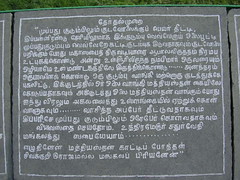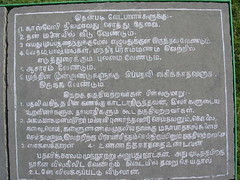Till recently aam junta like us believed that Subhash Bose died in plane crash in Taiwan. But investigations by the Justice Mukherjee Commission of Inquiry has revealed that it was a hoax. According to the Taiwanese, there was no plane crash during that period. The question then is, did anyone know about this previously and allow this false story to be propagated? Turns out our “favourite” Prime Minister, J Nehru knew about this and he kept quiet.
The biggest revelation, complete with documentation, is about the guilt of India’s first Prime Minister, Jawaharlal Nehru, in suppressing the basic facts about the Taiwan non-crash and subsequent bogus cremation of Netaji. Nehru, who doubled as India’s External Affairs Minister, had been personally informed by the Government of Formosa (as Taiwan was then called), albeit through British channels, in August 1956 about the full facts behind Japan’s staging of a spectacular “death” for the Indian hero.
Yet, Nehru had allowed the Shah Nawaz Khan Committee to go on with its command performance of an inquiry. He had accepted a report that completely contradicted the Formosan version. The myth about the air crash was allowed to grow under the assumption that a lie told many times becomes the truth. The Khosla Commission, instituted by his daughter Indira Gandhi, also reiterated it. Finally, in January 2005, the JMCI got the truth straight from Taiwan. [Did Nehru mislead nation on Bose?]
It seems the British, Formosans and Nehru knew the truth, but then certain documents which were handed over to the MEA in India just disappeared.
Did the first Prime Minister of India treat the Formosa papers as his personal property? There is reason to believe in the affirmative. He did not place it before Shah Nawaz Khan. Fourteen years later, his daughter, Indira Gandhi, did not turn them over to the GD Khosla Commission she had constituted to perpetuate the fiction about the Taihoku crash.
Had the British Government not declassified them in 1996, the Formosa papers would never have reached JMCI. The Vajpayee Government, which turned over hundreds of valuable files to JMCI during its six-year term, would certainly have included the Formosa papers if they were available in the archives of the MEA.[Despite Formosa probe, Nehru closed chapter on Netaji]
Also it turns out that the ashes kept at Renkoji Temple near Tokyo belong to somebody else. Justice Mukherjee went to Japan and had the box opened.
They found no ashes. There were parts of a human skull, portion of a jaw, some teeth (no gold filling in any of them) and some bone fragments. If, as the Shah Nawaz Khan Committee and GD Khosla Commission claimed, “Netaji’s body” had been “cremated ” for an entire night, no medico-legal expert would adduce that such soft bones would survive. Dr Madhusudan Paul of Kolkata Medical College, who went as a deponent, opined that skull fragments, three-fourths of the mandible and teeth would, in the event of cremation, be the first to vanish. Justice Mukherjee saved this crucial piece of insight for his final report.[Those aren’t Netaji’s ashes in Renkoji]
This is the opinion of one “expert” and there could be various other opinions as well. So far the investigation seems to suggest an alternate history, than the one we were made to believe with lot of cover-up at high levels of the Government. This could even be the plot for an episode of X-Files. So far the Pioneer reports have not leaked out information on what actually happened to Subhash Bose. If he did not die in the plane crash, then where was he at that time? Where did he live and how did he eventually die?
Related Links: Subhash Bose: Was not in Russia, Subhash Bose: The Investigations – II, Subhash Bose: The investigations, How did Subhash Bose die?

